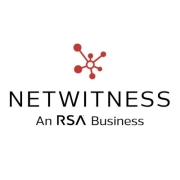SOAR solutions enhance security operations by combining orchestration, automation, and response capabilities. They streamline processes to boost efficiency and incident management for security teams.
SOAR platforms improve cybersecurity by integrating disparate tools and data sources, facilitating a cohesive defense strategy. They enable security teams to automate repetitive tasks, streamline workflows, and respond to incidents swiftly. By leveraging intelligence-driven insights, SOAR allows organizations to enhance their overall security posture, reducing response times and minimizing the impact of threats.
What are the critical features of SOAR solutions?In industries like finance and healthcare, SOAR solutions are implemented to address stringent security and compliance needs. These sectors utilize them for real-time threat intelligence and regulatory alignment, ensuring data protection and operational continuity.
Having SOAR integrated into an organization's security operations enhances incident response capabilities and ensures streamlined management of security processes. They allow businesses to adapt quickly to evolving threats while maintaining operational efficiency.
| Product | Market Share (%) |
|---|---|
| Microsoft Sentinel | 15.9% |
| Palo Alto Networks Cortex XSOAR | 9.6% |
| AWS Security Hub | 8.1% |
| Other | 66.4% |














































Organizations use these tools to handle the overflow of security-related information and events generated by the typical organization today. Security Operations Center (SOC) staff often manually manage the identification and response to cyber threats. However, as data streams and threat alerts continue to grow, it becomes nearly impossible to manually handle all this data. Here is where Security Orchestration, Automation and Response (SOAR) and Security Information and Event Management (SIEM) come in.
SIEM solutions collect and aggregate log and event data from applications, security devices, and systems into a centralized platform, then analyze this data to identify indicators of compromise (IoC) that may point to a cyber attack. These solutions use machine learning to improve their detection capabilities.
A SIEM platform collects, processes, correlates, aggregates, and monitors for anomalies across data logs, then notifies users through alerts when it detects suspicious behavior.
SIEM focuses on finding suspicious behavior and triggering alerts, leaving the actual response and remediation to humans. Thus, while it improves threat detection, it actually creates more work for SOC teams. In addition, it can contribute to alert fatigue if there is a large number of false positives. That being said, SIEM excels at ingesting and parsing large datasets of internal logs, thus complementing SOAR’s capabilities.
SOAR solutions go several steps further than SIEM by increasing the pre-processing of detected threats before the system alerts a cybersecurity officer. SOAR can ingest data from external sources, like threat intelligence sources. In addition, as the main function of SOAR technologies is the ability to coordinate and leverage different security products, the system gives organizations the possibility of streamlining existing tools, using them in new ways.
So, which should you choose? You should use both. SIEM tools are better for processing large volumes of data, while SOAR can leverage SIEM’s capabilities, orchestrating SIEM together with other security tools.
SOAR solutions enhance cybersecurity efficiency by automating repetitive tasks, allowing security teams to focus on higher-priority threats. With SOAR, you can streamline alert management, improve incident response times, and minimize human error. This leads to reduced fatigue among your security personnel and enables them to tackle more complex security challenges effectively.
What should you consider when implementing a SOAR solution?When considering a SOAR solution, assess your current security infrastructure and identify integration capabilities with existing tools. Evaluate the level of customization needed to match your security processes and ensure the solution supports your incident response workflows. Scalability and vendor support are also crucial, as they determine how well the solution will adapt to your company's growth and changing needs.
Can SOAR improve threat intelligence sharing?SOAR significantly enhances threat intelligence sharing by aggregating data from multiple sources and automating the dissemination of indicators of compromise (IOCs) across your network. This enables you to quickly react to emerging threats and maintain a proactive security posture. Effective threat intelligence integration within SOAR helps to build a more comprehensive defense strategy and fosters collaboration between teams.
How does SOAR facilitate incident response automation?SOAR facilitates incident response automation by utilizing predefined workflows to handle incidents efficiently. These workflows are designed based on best practices and can be customized to suit your organization's specific needs. By automating tasks such as data enrichment, notification, and containment actions, SOAR reduces the time needed to investigate and remediate incidents, allowing you to quickly neutralize threats.
What role does machine learning play in SOAR solutions?In SOAR solutions, machine learning plays a pivotal role in enhancing threat detection and response capabilities. By analyzing historical data and identifying patterns, machine learning models can improve alert accuracy and predict future threats. This enables you to prioritize incidents based on risk and potential impact, ensuring a more effective allocation of resources and a stronger security posture.